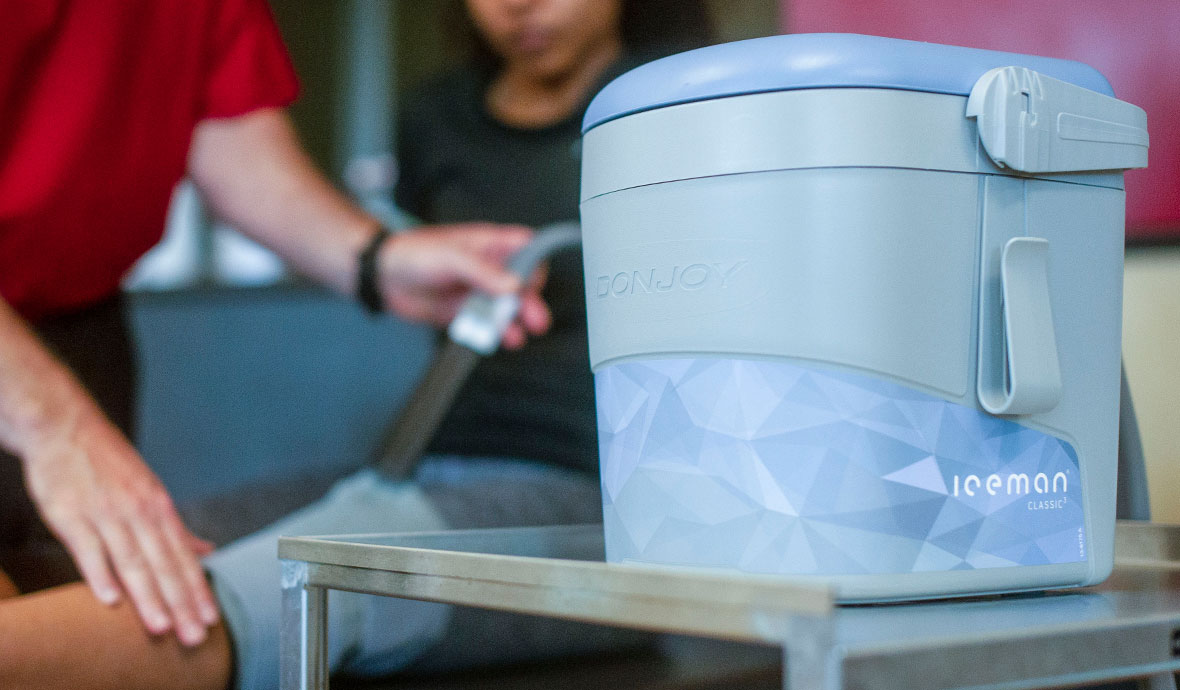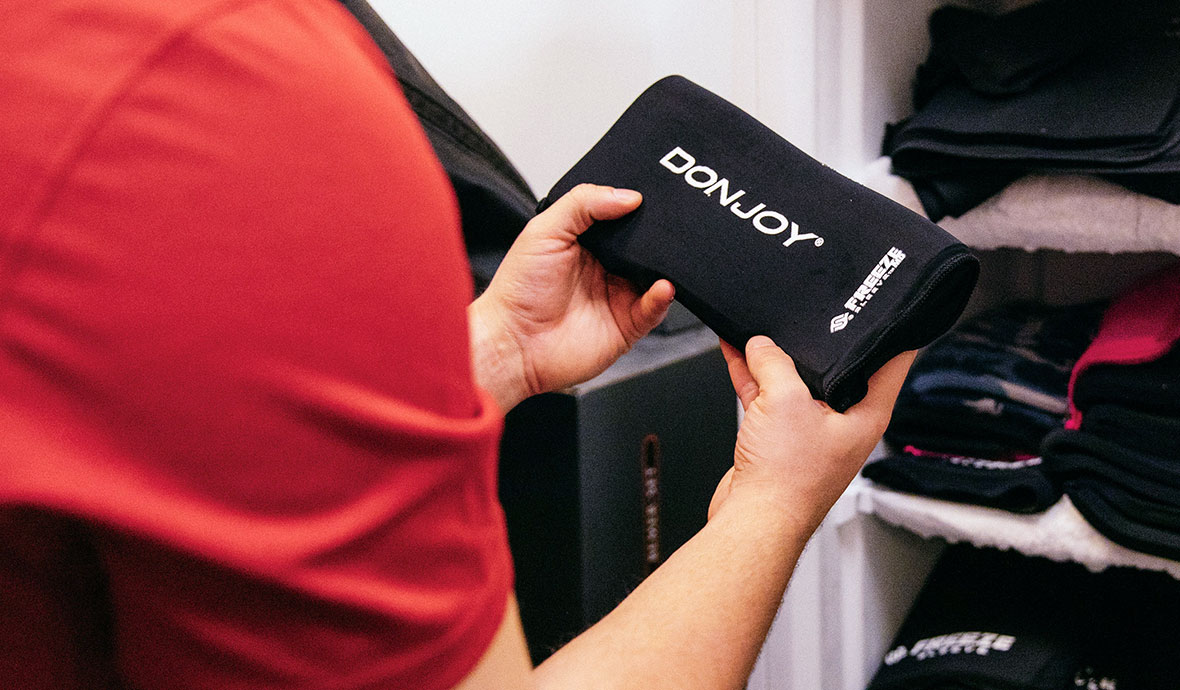Following an injury, you’ve probably been advised to use ice, heat, or both. Depending on the injury, both hot and cold therapies offer advantages to aid pain relief. How do you know which one is best for you? The suggestions below can help you decide.
Cold therapy (cryotherapy)
- Use cold to aid acute pain and new injuries that are swollen and inflamed, such as sprains and recent tissue damage. Apply cold to the injured area; if you are using ice, protect your skin by placing a towel between the ice pack and your injury.1
- For chronic tissue injuries, apply cold followed by compression after a workout. Use cold gel packs such as these by Chattanooga®, and compression wraps such as these from Durasoft™.
- Need cold and compression at the same time? Try the Aircast® Cryo/Cuff™* cold therapy(by prescription) or DonJoy® FreezeSleeve™ MD. The FreezeSleeve’s compression design allows for comfortable use on multiple areas of the arms and legs, and daily treatment aid on the go.
- After surgery, cryotherapy may be an alternative to prescription opioids to help reduce pain, swelling, edema and muscle spasms, as well as improve range of motion. The DonJoy® CLASSIC3™* utilizes dual pump recirculation technology, blending warmed water with cooler ice bath water in a mixing chamber at a constant rate. This creates a continuous, reliable flow of cold water throughout the cold pad, whereas other cold therapy systems can restrict or pinch water flow, which may cause inconsistent pad temperatures and variations.
 DonJoy® IceMan CLASSIC3™
DonJoy® IceMan CLASSIC3™ Heat therapy
Heat may be better for chronic pain, muscle spasms, joint pain or an injury more than 24 to 48 hours old. Heat stimulates blood flow and helps relax tight muscles.2
Heat should only be used before exercising. To apply heat, use a heating pad or hot, wet towel. Chattanooga® has a range of quality moist heat packs. A warm shower is another option.
 DonJoy® FreezeSleeve™ MD
DonJoy® FreezeSleeve™ MD Combination therapy
- A combination of heat and cold can be used after a recent injury to help keep swelling down and increase circulation.
- For muscle tears or strains, start with ice and move on to heat when the inflammation has reduced.3
- Apply ice or heat for no longer than 10-20 minutes at a time.
- Listen to your body. Heat or cold should not worsen the pain or injury.
Talk to your doctor if you have further questions about hot or cold therapy and before using any prescription devices.
FreezeSleeve™ is a trademark by FreezeSleeve, LLC.
The contents of this article were independently prepared and are for informational purposes only. The opinions expressed herein are those of the author and are not necessarily indicative of the views of any other party. Individual results may vary depending on a variety of patient-specific attributes and related factors.
*WARNING: This device can be cold enough to cause serious injury/ Read and understand all warnings and instructions for use before using this device. Additional warnings appear in the instructions for use.
1. http://orthopedics.about.com/cs/sportsmedicine/a/iceorheat.htm
2. http://www.prevention.com/fitness/fitness-tips/ice-or-heat-injury
3. http://www.healthline.com/health/chronic-pain/treating-pain-with-heat-and-cold#2
*Cohn BT, Dreager RI, Jackson DW (1989) The effects of cold therapy in the postoperative management of pain in patients undergoing anterior cruciate ligament reconstruction. Am J Sports Med 17:344-349